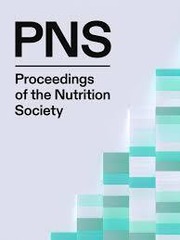Human studies suggest that reducing dietary saturated fatty acids (SFAs) via replacing it with unsaturated fatty acids (UFAs) has a beneficial effect on fasting low-density lipoprotein cholesterol (LDL-C)(Reference Siri-Tarino, Sun and Hu1). However, significant variation in LDL-C concentration has been observed in response to change in dietary SFA intake(Reference Vafeiadou, Weech and Altowaijri2,Reference Jebb, Lovegrove and Griffin3) and there is considerable interest in potential determinants underlying the responsiveness of LDL-C to fat intake. Dietary fat composition affects body fat distribution with higher SFA intakes associated with abdominal obesity and greater cardiovascular disease (CVD) risk(Reference Rosqvist, Iggman and Kullberg4). However, it is not clear whether the variability in LDL-C response to dietary SFA is related to changes in body composition.
To address this knowledge gap, we performed a human study in which 41 healthy men with a mean age 51 ± 10 years and BMI of 24.9 ± 3.3 kg/m2 consumed two iso-energetic high fat (35% total energy (TE)) diets; a high SFA (18%TE) followed by a low SFA (10%TE) high UFA for 4 weeks each. Fasting blood samples were collected to determine circulating lipid CVD risk markers and participants underwent a dual energy x-ray absorptiometry scan to accurately determine their body composition at each visit (weeks 0, 4 and 8). Body composition measures and CVD risk markers after the diets were compared using paired t tests. Relationships between changes in lipid risk markers with body composition were assessed by bivariate Spearman's correlations prior to multivariate regression analysis.
Significant reductions in total cholesterol (TC), triacylglycerol, high-density lipoprotein cholesterol (HDL-C) and LDL-C concentrations (on average 10–15% p < 0.01) were evident after replacing dietary SFA with UFA. However, inter-individual variability in the change in LDL-C concentration ranged from -39% to +19%. Although body weight did not differ between diets, the percentage of android fat decreased after the UFA compared to the SFA diet, while there was an increase in android lean mass (p ≤ 0.02). Bivariate correlations revealed a positive relationship between changes in TC and non-HDL- C concentrations with the android:gynoid fat ratio after replacing SFA with UFA (rs=0.36–0.38, p < 0.05). Moderate positive associations were also evident between changes in TC, LDL-C, and non-HDL-C with body fat mass (rs=0.31–0.35, p < 0.05). Moreover, the change in android lean mass was negatively correlated with the change in HDL-C (rs=0.43, p < 0.01) whilst the change in total lean body mass was positively associated with the TC: HDL-C ratio (rs=0.32, p < 0.05). In multiple regression analysis, 12.5% of the variability in LDL-C was explained by the change in body fat mass.
In conclusion, replacement of dietary SFA with UFA was found to have a beneficial effect by reducing central obesity and CVD risk markers in healthy men. Improvements in the fasting lipid profile in response to lower SFA intake may be mediated in part by the impact of dietary fat on body composition.





